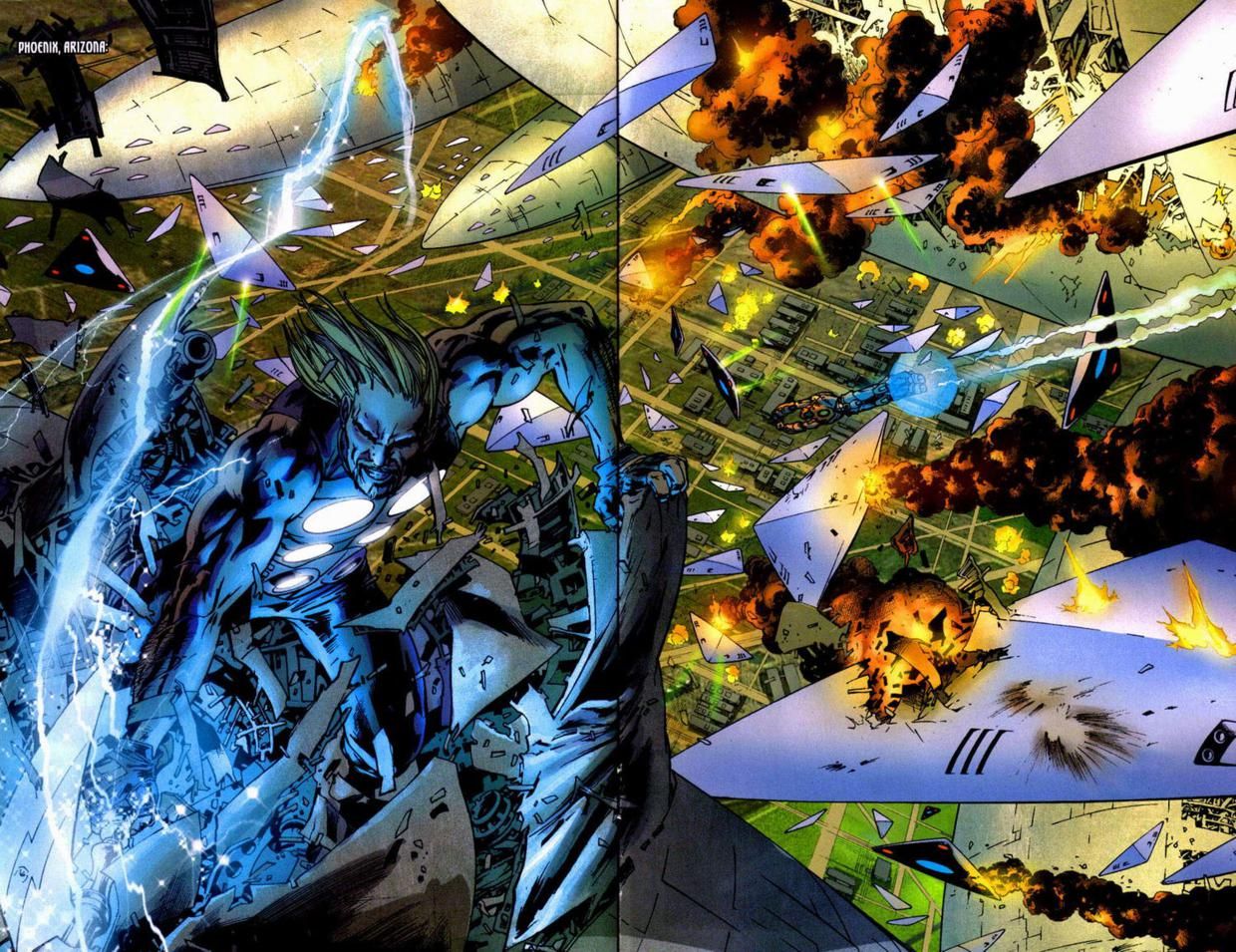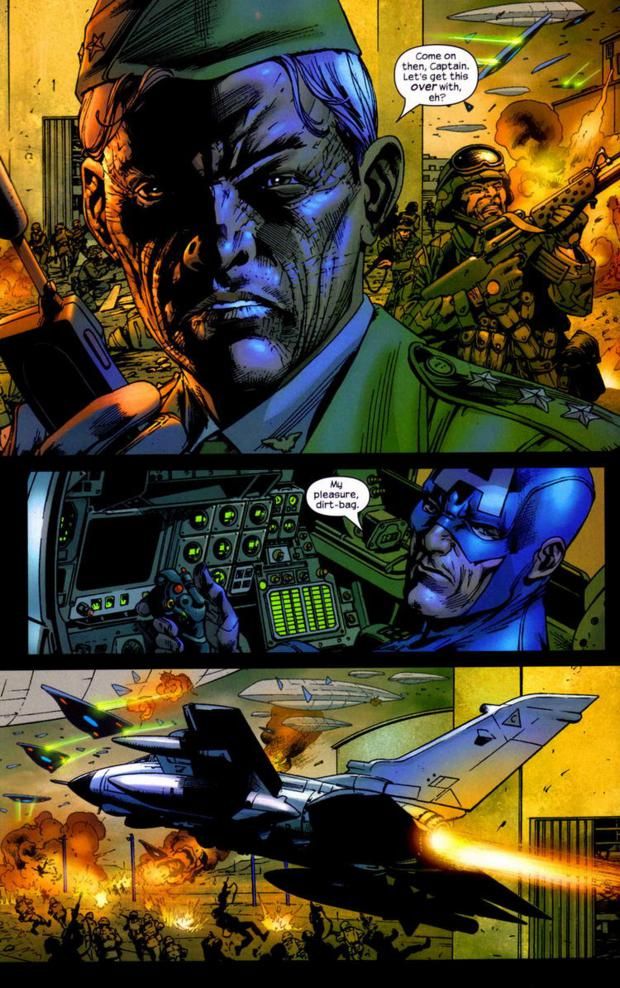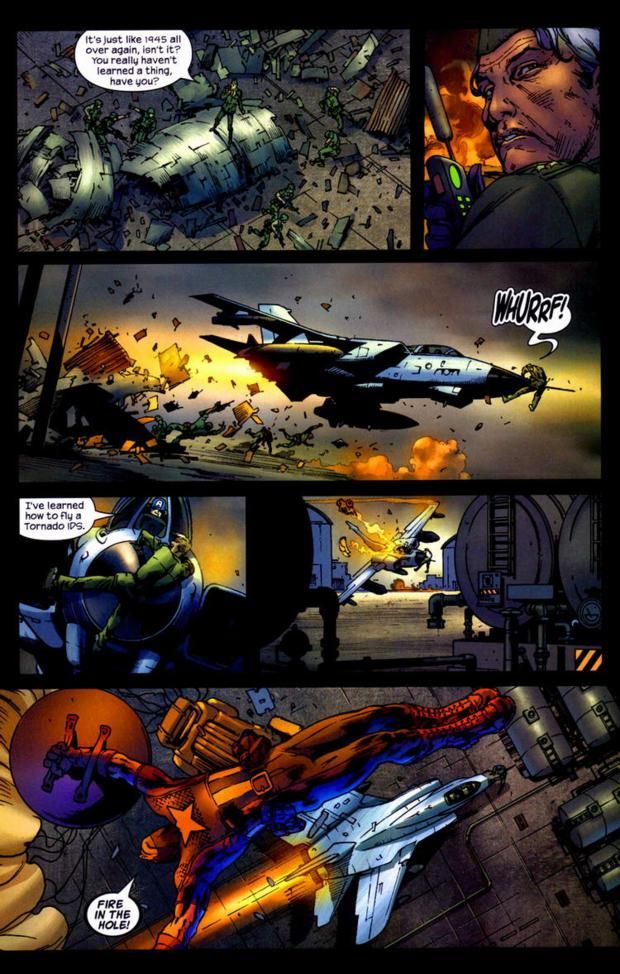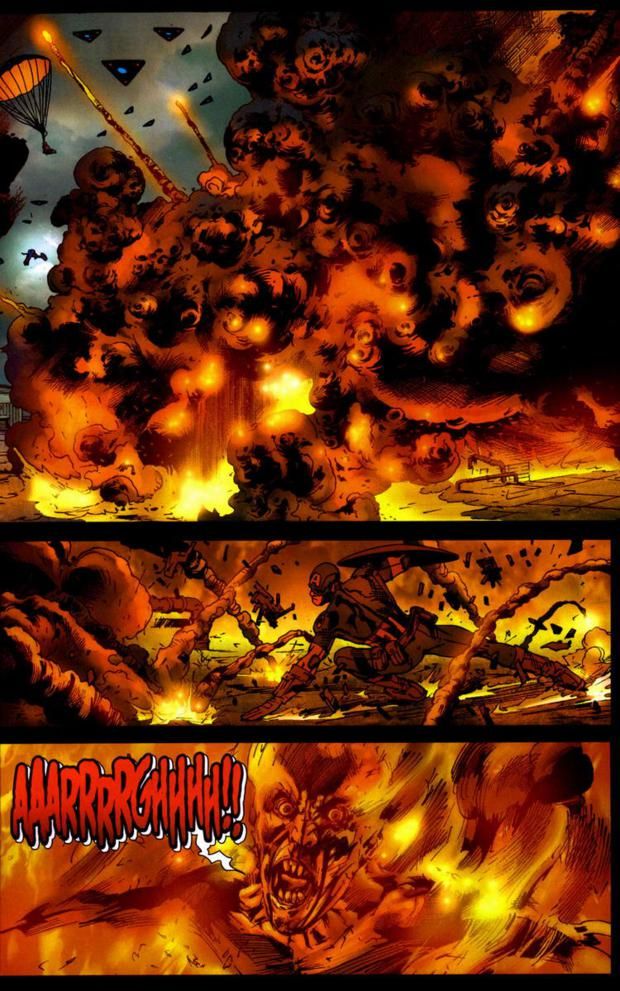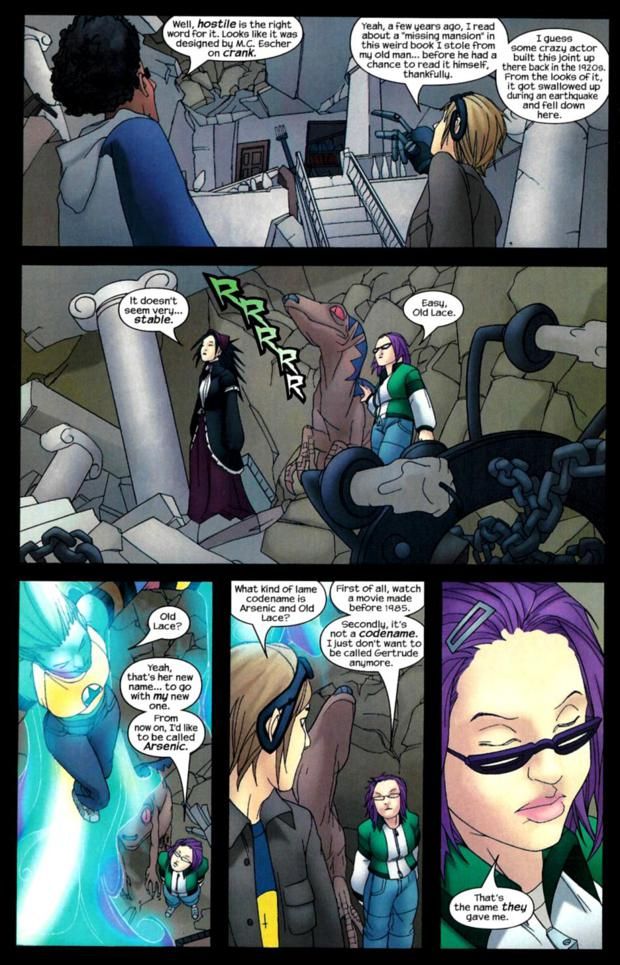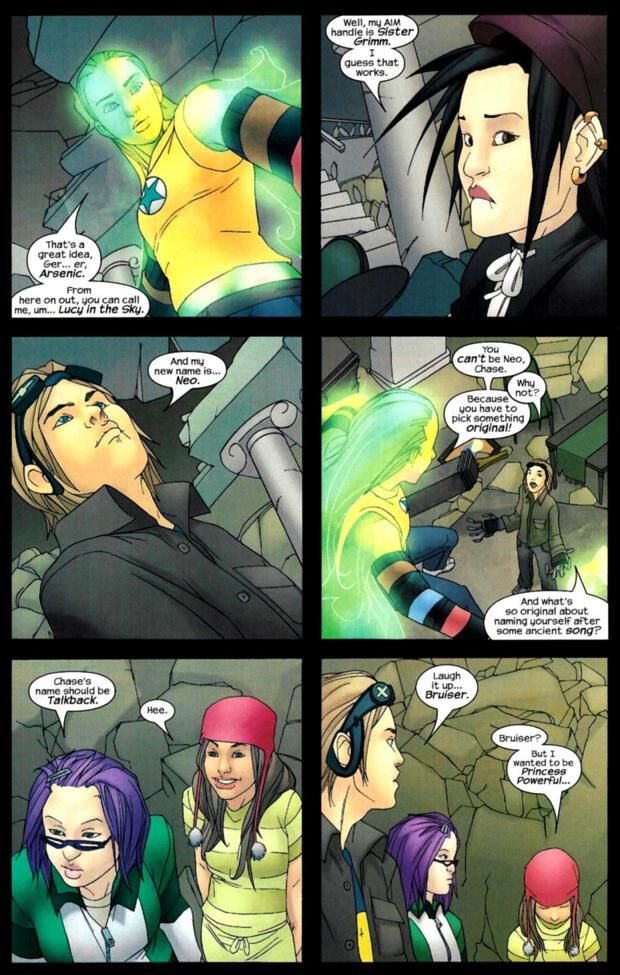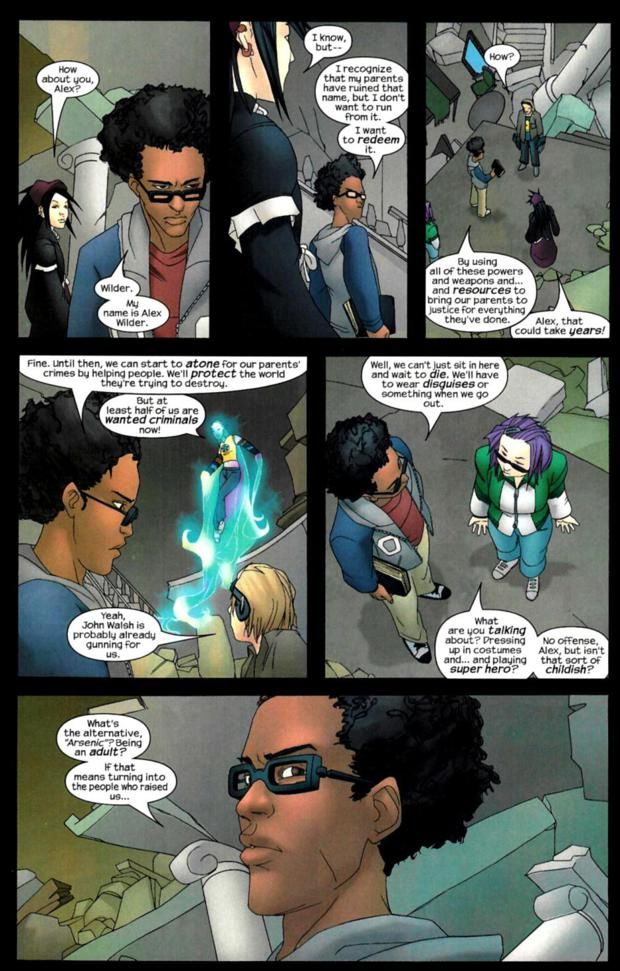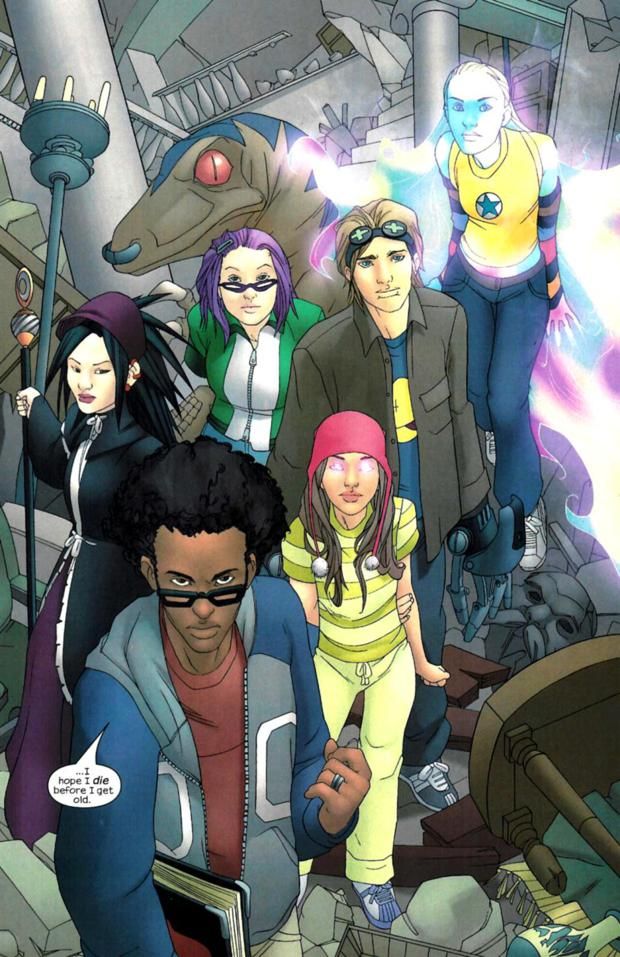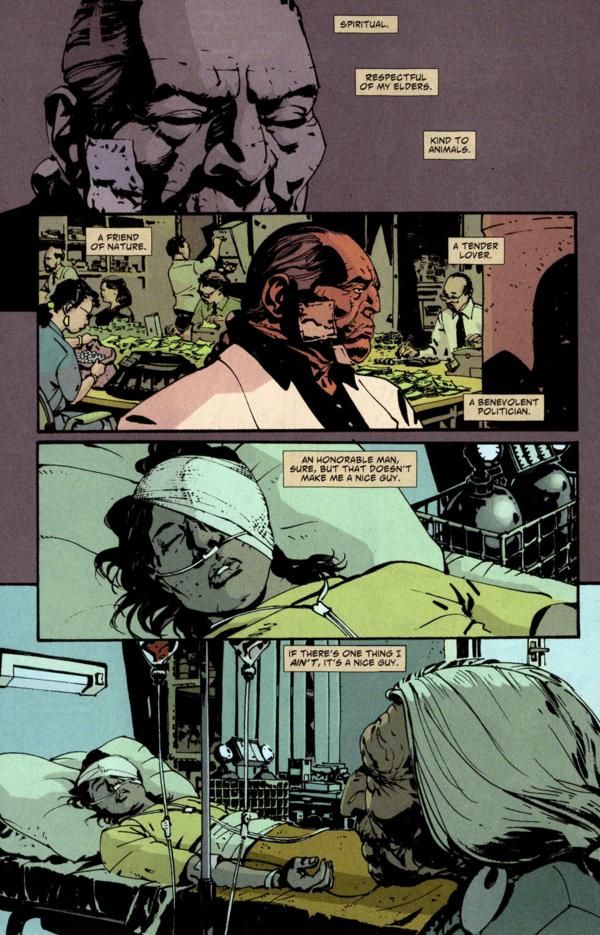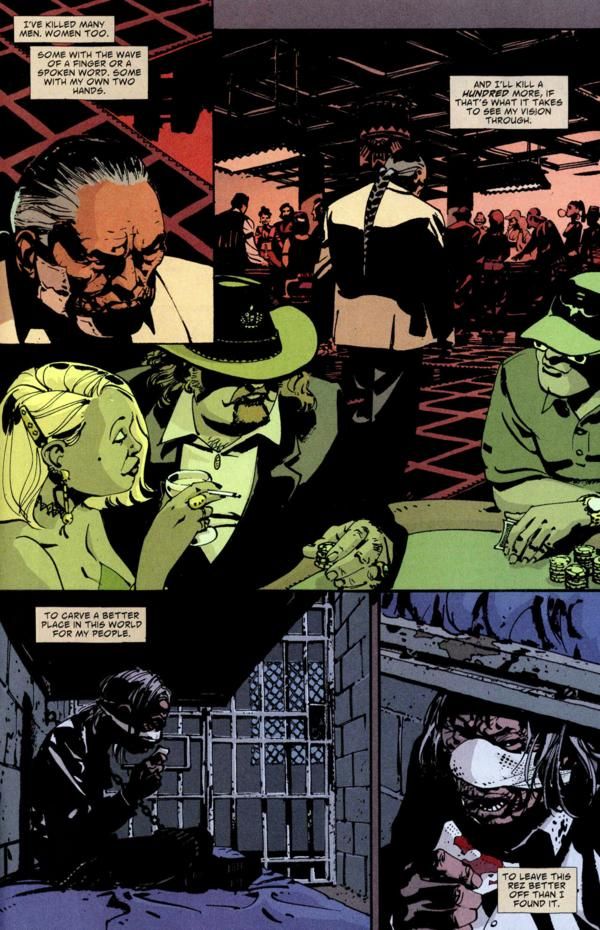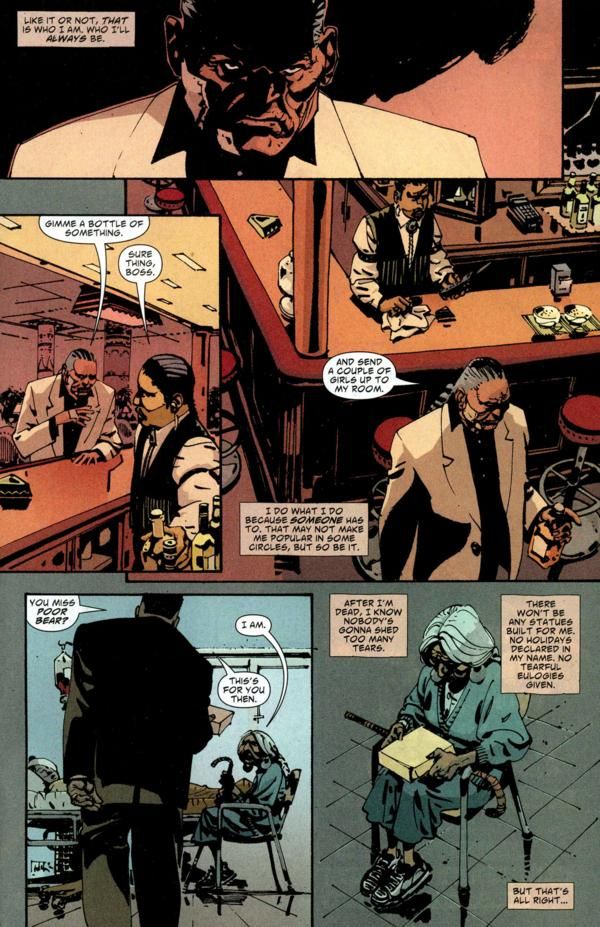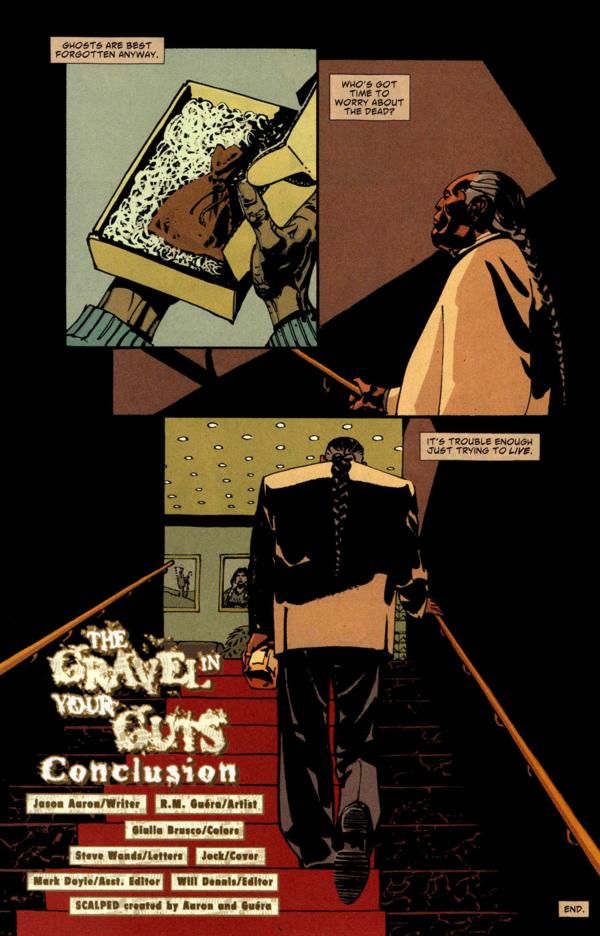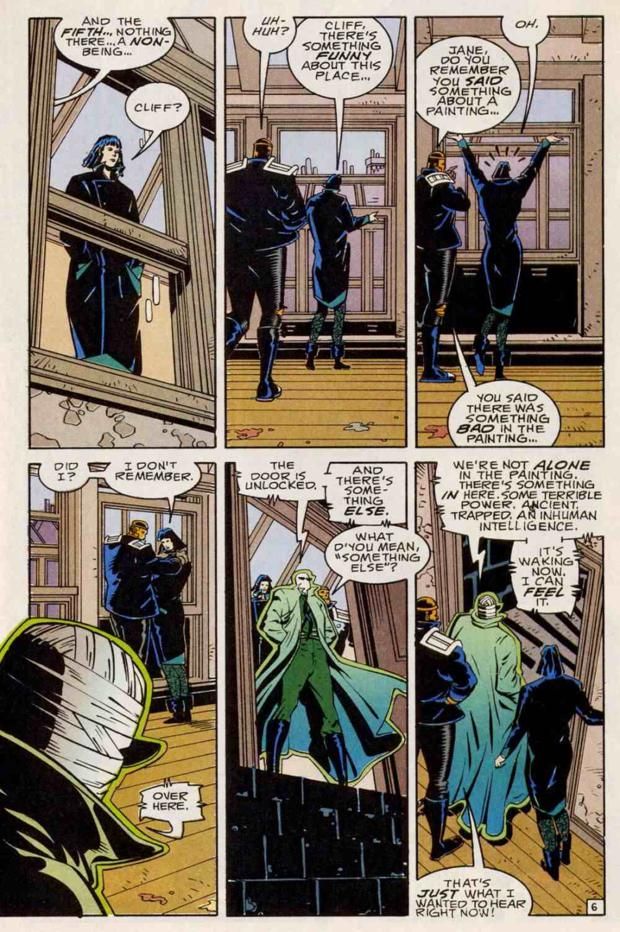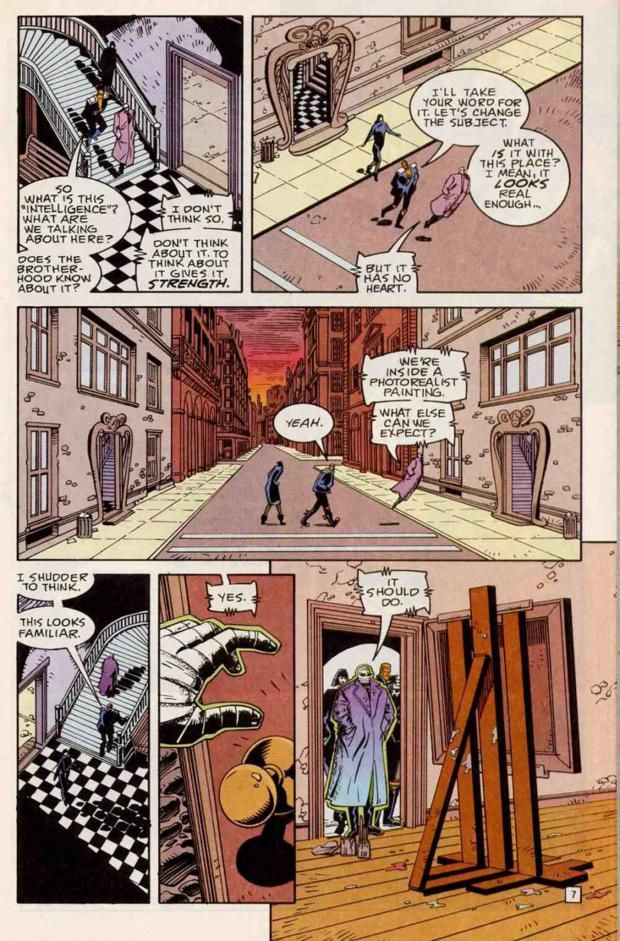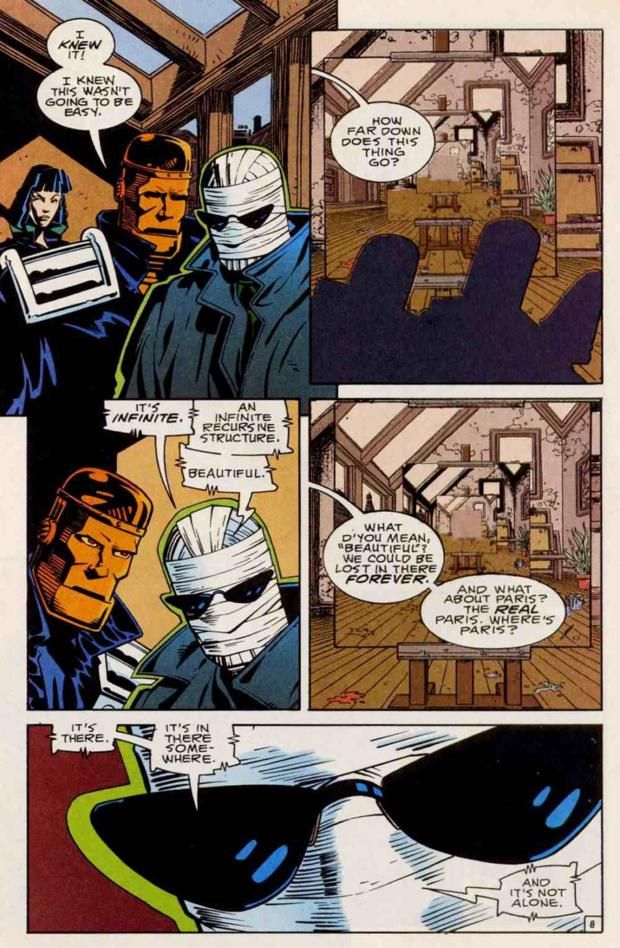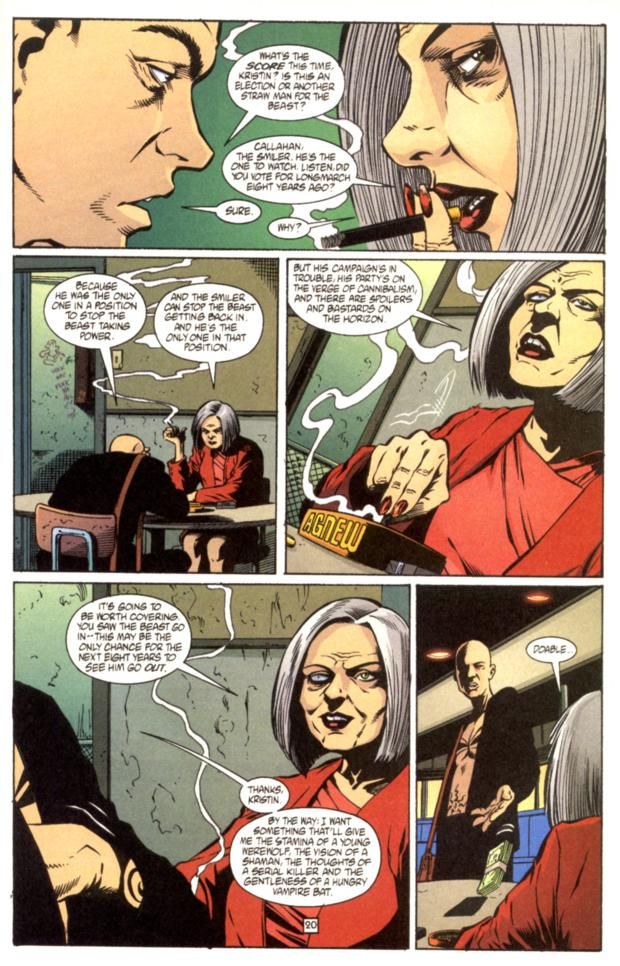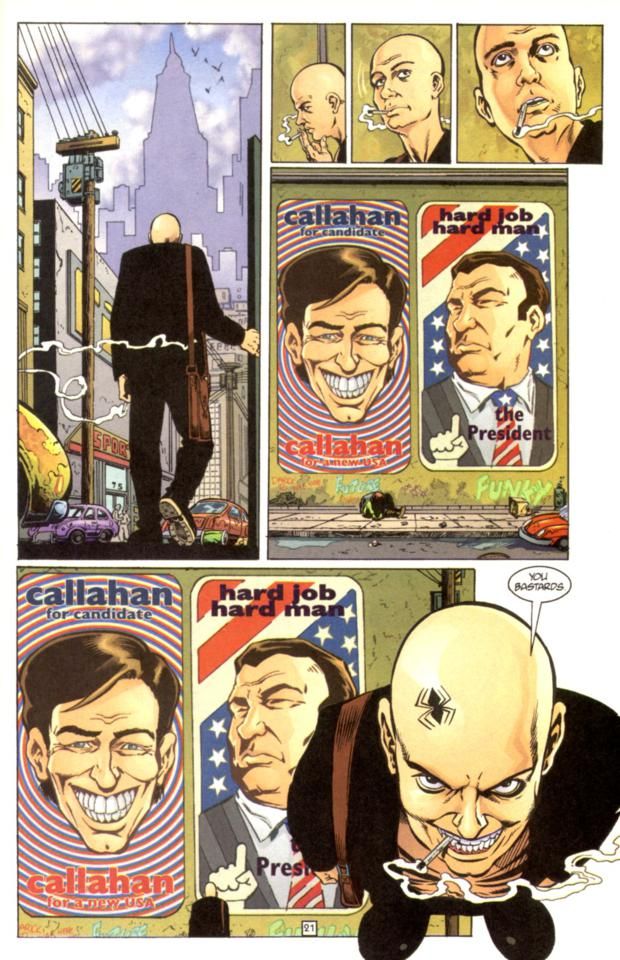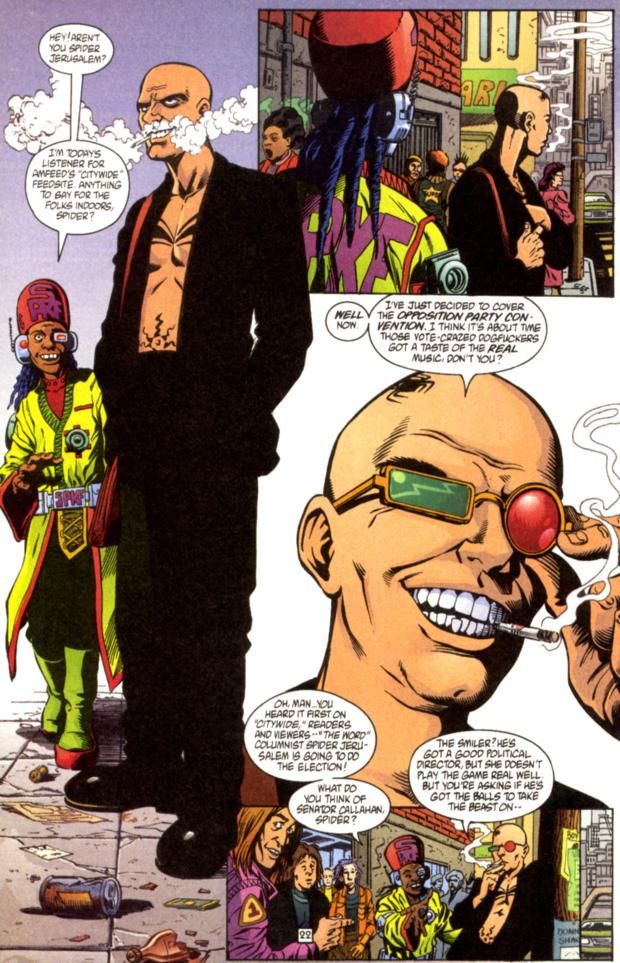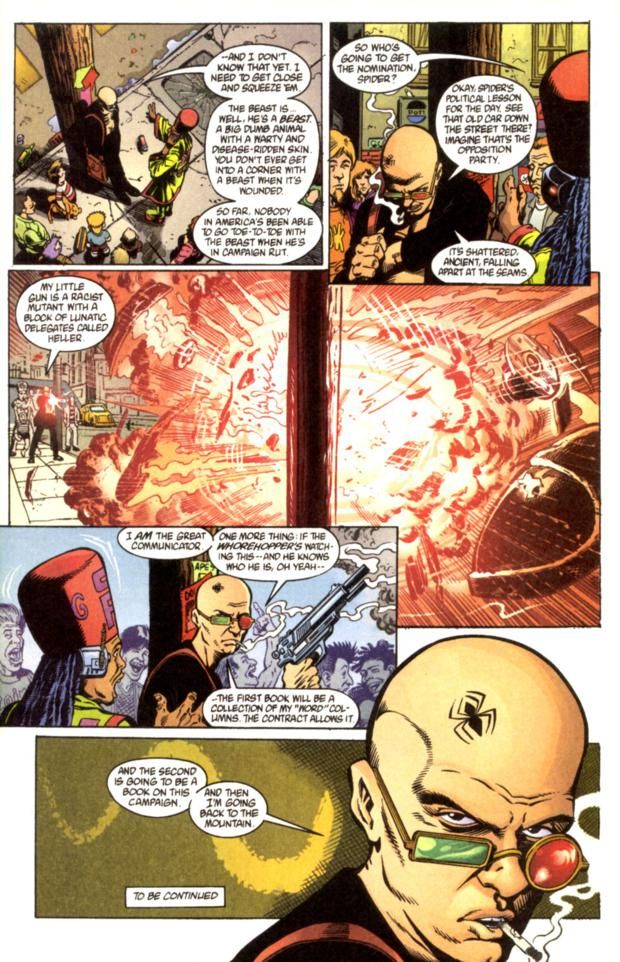You voted, now here are the results of your votes for your favorite comic book creator runs of all-time! We'll be revealing five runs a day for most of the month. Here is a master list of all of the runs revealed so far.
Here's the next five runs...
35. Mark Millar and Bryan Hitch’s Ultimates – 265 points (2 first place votes)
Ultimates #1-13, Ultimates 2 #1-13
The Ultimates is essentially a post-modern take on the Avengers, with all of the characters filled with all sorts of neuroses, while the realistic artwork of Bryan Hitch helps to show what it would look like if there were actual superheroes in the world.
Captain America is recovered at the end of the first issue, and he is brought in to lead a team of superheroes, consisting of Iron Man, Giant Man and the Wasp.
Nick Fury, head of SHIELD, is also involved.
The book is noted for its widescreen action, courtesy of Bryan Hitch (taking the same style he used to such great effect on The Authority), and the soap opera drama that occurs throughout the series, such as when Giant Man physically abuses his wife, the Wasp, and is thrown off the team. When Bruce Banner turns into the Hulk and goes on a rampage in New York, the team is forces to go into action for the first time against one of their own colleagues! This is when Thor joins the team, although through odd means.
The rest of the series involves an alien invasion, and the addition of new members, Hawkeye, Black Widow, Scarlet Witch and Quicksilver.
Check out the over-the-top action Hitch draws so well...
Writer Mark Millar ramps up the drama in the second volume, doubts have been raised as to whether Thor is a real god, or if he is just insane. Meanwhile, there is a traitor in the Ultimates' midsts, and another invasion is coming - this time from other countries on Earth.
The finale ended with some beautiful Bryan Hitch artwork. Millar later returned to do a few sequels, now starring a Black Ops version of the Ultimates.
34. Brian K. Vaughan and Adrian Alphona’s Runaways – 272 points (6 first place votes)
Runaways #1-18, Runaways Vol. 2 #1-24
Part of a new line of Marvel comics, Runaways is the only one still coming out, and that has all to do with the ability of Brian K. Vaughan and Adrian Alphona to create likable characters that people want to see more of.
The concept of Runaways was a clever one - a group of teens (and one pre-teen) meet each other every year when their parents have some sort of meeting. When they decide to snoop around, they discover the unthinkable - their parents are supervillains!!! With this knowledge in mind, the kids decide to (wait for it..) run away, each taking something with them from their parents, whether it be Nico Minoru (Sister Grimm)'s magical powers, Karolina Dean (Lucy in the Sky)'s alien abilities, Gertrude Yorkes (Arsenic)'s pet dinosaur, Chase Stein (Talkback)'s gadgets, Molly Hayes (Bruiser/Princess Powerful)'s mutant strength or Alex Wilder's cunning and tactical abilities.
On the run, they try to both foil their parents' schemes while also trying to do some good.
Here's the bit where they pick out their nicknames...
The key to this series, like most great series, is the character interaction between the group. Vaughan created some in-depth intriguing personalities here, whether it be Karolina struggling with her sexual identity, Chase and Gert's burgeoning relationship, Nico and Alex's flirtation, or Molly's amusing comments (as the youngest, Molly was the comic relief of the series, although she often had serious moments, too).
The first volume ended with tragedy, and in the second volume, the group added two new members, a Skrull (Xavin) who was engaged to Karolina (via her parents, of course) and Victor, who was sort of the son of Ultron.
Vaughan and Alphona (who was a wonder to see on the comic, as he just got better and better and better as the series progressed) left the book to Joss Whedon and Michael Ryan after #24 of the current series.
33. Jason Aaron and R.M. Guera’s Scalped – 289 points (4 first place votes)
Scalped #1-60
Scalped was a brilliant crime drama from Jason Aaron and R.M. Guera that told the story of an FBI agent named Dashiell Bad Horse who is sent undercover in the reservation that he grew up in to take down the chief of the reservation, Lincoln Red Crow.
Scalped was a character-driven work, and one of the ways Scalped let the characters drive the narrative was continually playing various characters against each other and in and out of various roles. Does character A belong in this box or this box? Where each of the characters end up from the start of the series is at first glance quite surprising, but the more you learn about these people the more their final decisions make sense. It is a great testament to Aaron's skills as a writer that he naturally evolved all of these characters and gave them such great depths that all of their decisions were well within their respective character arcs.
Clearly, the most important relationship in the series is that between Lincoln Red Crow and Dashiell Bad Horse.
Red Crow is likely the most fascinating character in the series. Here's a great moment where he gets introspective about just who Lincoln Red Crow IS...
Guera's a brilliant artist, as his noir art style perfectly evoked the feelings Aaron was going for in each issue. Aaron was lucky to have a nunber of good fill-in artists, as well. Plus, Jock and John Paul Leon KILLED it on the covers of this series.
Much like Garth Ennis, Aaron's talents in this series lie in getting you to become invested in these characters so that when the screws are turned on them you have a visceral reaction. Scalped has some of the most haunting stories. Like the tale of Red Crow's daughter and her sad, dark relationship with Dashiell. Or the poignant, heartbreaking plot of "Dead Mothers" (the scene of a group of siblings instinctively tearing up the hamburgers given to them by some police officers because that's how they have learned to get by living with their crack addict mother is disturbingly realistic - their reaction when they realize that they EACH get a hamburger is startling). This is not a series for the faint of heart, but if you want interesting stories that all build on the stories that precede them, great characters, strong relationships, intriguing plot twists...then this is the series for you (provided, again, that you can deal with some effed up plots). It was certainly the series for me. One of my favorite series of the past five years. An "instant classic," if you like.
32. Grant Morrison’s Doom Patrol – 333 points (8 first place votes)
Doom Patrol #19-63 (plus Doom Force #1, I suppose)
Arnold Drake created the Doom Patrol to be the world's strangest superheroes, but by the time Grant Morrison took over the book, the second generation of the Doom Patrol were more of a half-hearted attempt at duplicating the success of the All-New, All-Different X-Men. Morrison decided to embrace the concept of the world's strangest superheroes, and he gave the world a title that was strange, all right, but strange coming from the mind of Grant Morrison.
Outgoing writer Paul Kupperberg was kind enough to remove most of the members of the team for Morrison, as Morrison was really only interested, amongst the main cast members of the book, in Niles Caulder and Cliff Steele (although Josh Clay, a member of Kupperberg's team, also stuck around, as the team doctor - Morrison would use him as the lone voice of sanity among all these bizarre goings-on, but sadly, as you might imagine, the one sane guy doesn't stand much of a chance in a book like this). That said, Morrison DID bring back a minor character from early in Kupperberg's run, the powerful girl with "imaginary" friends and a face like an ape, Doroty Spinner. New team members were Crazy Jane, who had different powers for each one of her split personalities and Danny the Street, who was, well, a street.
Morrison used the group to explore various secret groups, all with an idea for making the book as bizarre as possible. The great thing about it was that Morrison slowly made the book weirder and weirder as he went along, so the first issues are fairly normal, but if you compare his early issues to the end of his run - it's like night and day.
Morrison used all sorts of different ways of telling stories, as well as doing a number of parodies, most notable of all, the Charles Atlas take-off, Flex Mentallo (who would later gain his own spin-off mini-series by Morrison and Frank Quitely). Some of the bizarre characters included the evil Scissormen, the Brotherhood of Dada, and one of Dorothy's scariest creations, the Candlemaker.
Here is when the Doom Patrol had to solve the case of the Painting that ate Paris...
Towards the end of his run, Morrison spun the book around on its head, with a member of the group revealing a dark secret. By the time he left, he did not leave really much for incoming writer Rachel Pollack to do - the book really ought to have just ended with Morrison's last issue, the book by the point of his departure was so indubitably his, and he took most of the coolest characters with him as he departed.
31. Warren Ellis, Darick Robertson and Rodney Ramos’ Transmetropolitan – 336 points (6 first place votes)
Transmetropolitan #1-60
Originally a part of a failed new line of comics (Helix), Transmetropolitan was soon the only comic left standing, and moved to Vertigo, where creators Warren Ellis and Darick Robertson told the adventures of journalist Spider Jerusalem (a tribute to the founder of "gonzo journalist," the late Hunter S. Thompson) for five eventful years.
The basic concept of the series was simple - famed writer Spider Jerusalem has disappeared for five years, living a hermit existence, until the money he was paid in advance for writing two books dries up, and since he doesn't have the books written, to avoid lawsuits, he returns to his job as a journalist to support himself while he finishes the books - and in the process, becomes involved in the life of The City once again.
The book is set in the future, although most of the events of the comic shadow events of the past, usually events from when Thompson first began reporting (so the late 60s/early 70s). Jerusalem has two female assistants who he refers to as his "filthy assistants." The series is mostly built around the audience enjoying Jerusalem, a hilarious and cynical soul railing against the corruption of the future, a future so corrupt that someone as awful as Jerusalem can truly be seen as a hero.
The series ended with a very cool twist ending.

